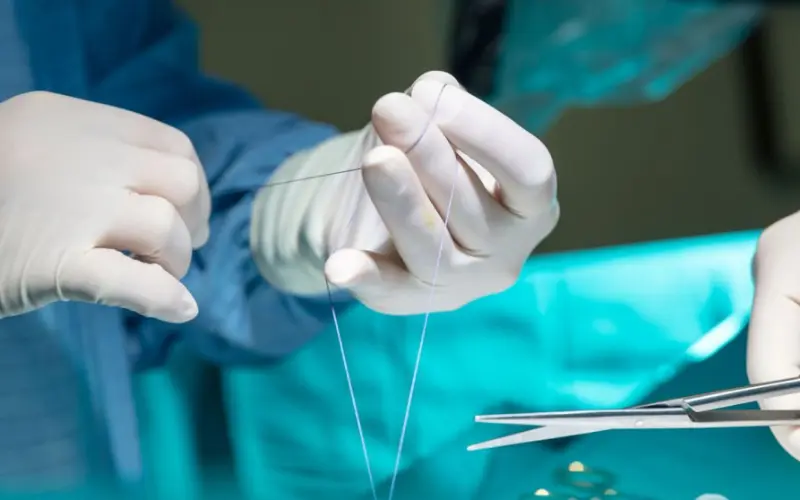Chinese scientists have created a new type of stitch, which greatly accelerates healing. The innovation lies in the suture thread, which is self-electrified.
Visually, this new stitch, which allows faster healing, resembles traditional stitches. However, laboratory and animal tests have shown that this technique can speed up wound healing by 50%, including when it comes to stitching muscle fibers. The risk of infection is also reduced, with fewer bacteria present around the wound.
What is a suture ?
The innovation lies in the suture thread, which is self-electrified. Electrical stimulation of a wound has been proven in the past to promote healing by attracting cells to the appropriate area. This is a very light electrical charge, a bit like the one created when you rub a balloon on your hair.
This surgical wire self-electrifies without a battery, because it is composed of chemical elements with opposite electrical charges. It is a magnesium wire wrapped in a biodegradable sheath. When the wound moves and the suture tightens, this movement creates a painless electrical charge that causes certain skin cells to group together around the stitches to repair the wound.
Promising tests
These researchers were able to observe this in the laboratory as well as in rats. After 10 days, rats injured in a muscle and sutured with this thread had an almost completely healed wound, which was far from being the case with a conventional thread.
Use in hospitals will still have to wait, since human tests, started by the team of researchers at Shanghai University, will take at least two years. However, the outlook is promising, because this surgical thread is entirely biodegradable, like conventional threads. It is also just as resistant, if not more, and above all, this suture thread should not cost more to produce than those used today, explain the researchers, Tuesday October 8, in the very serious journal Nature communications.
Also read :-

